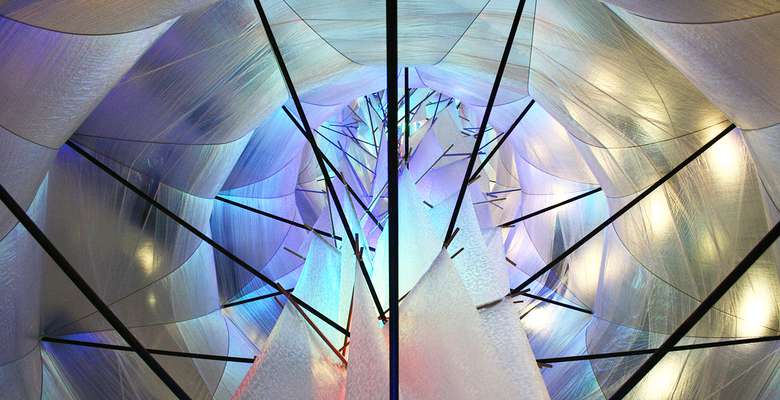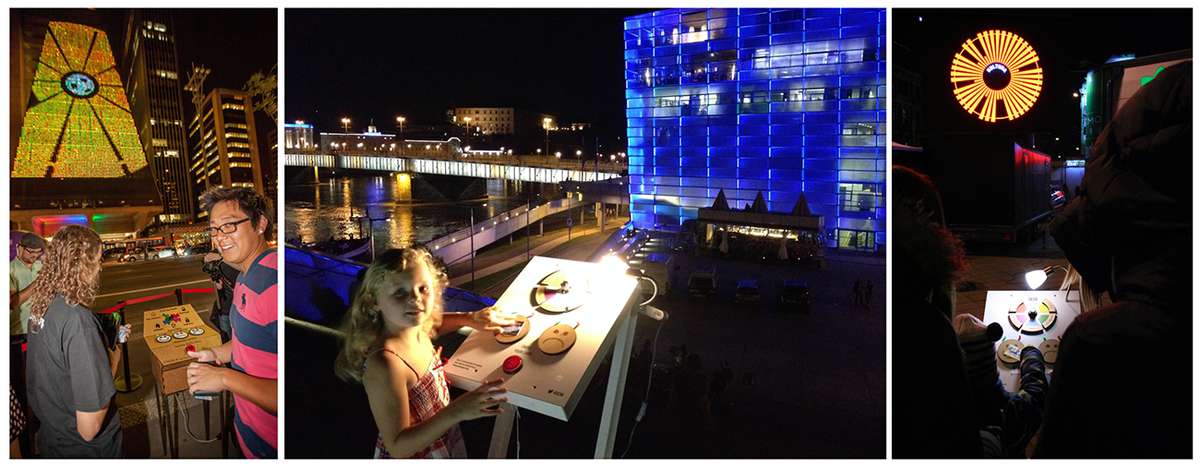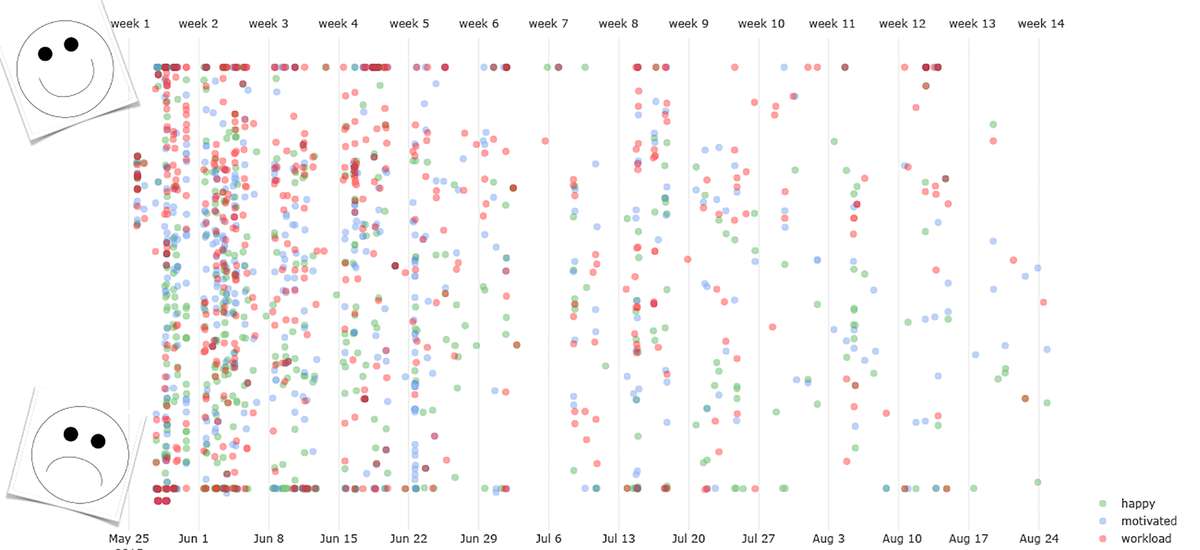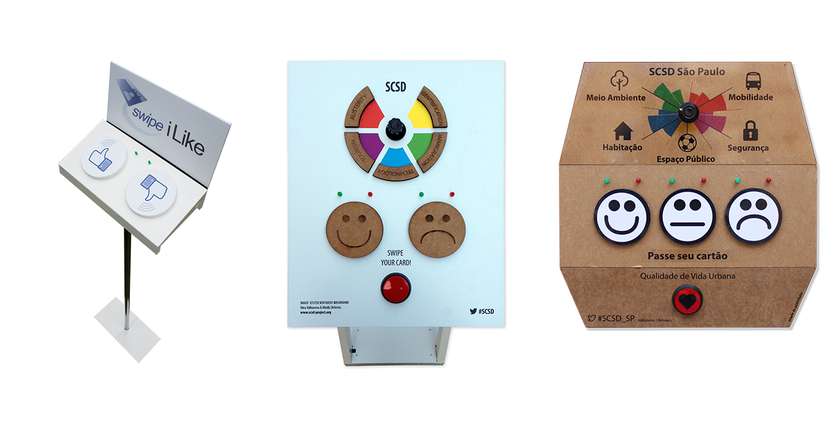Idea by
Moritz Behrens, Konstantinos Mavromichalis, Nina Valkanova
media architecture | urban IxD | research
http://sentimentarchitectures.org
Call for ideas 2016
Sentiment Architectures
Sentiment Architectures

The anthropometric age described accurate Cartesian knowledge regarding the physical needs of humans through understanding the metric proportions of the body in relation to the surrounding physical space. Architects and designers such as LeCorbusier surveyed human ergonomics and suggested design principles for an anthropometric scale based on Vitruv’s early considerations. On the contrary today it is all about the understanding of how humans behave in space. The prevalence of digital technology infused the built environment with an ecology of sensors. Through a dense network of interfaces such as mobile devices, urban screens and media facades human behaviour is tracked constantly. Our everyday culture even seems to be structured by digital technologies. But how do we design interactive architectures in the age of behavioural data? We consider SENTIMENT ARCHITECTURES as a practice that materialises human behaviours and emotions through interactive technologies and physical structures.

SENTIMENT CARRIERS Computer technologies increasingly affect architecture in the way that buildings turn into computer interfaces. Large programmable electronic displays attached to buildings such as urban screens, media facades or media architecture are obvious examples of digital media technology being materialised in architectural form. Our SMART CITIZEN SENTIMENT DASHBOARD has been deployed in Sao Paulo (le), during the Ars Electronica Festival (ctr) and whilst the Staro Riga Festival (ri)

SENTIMENT INTERFACES We deploy situated and tangible systems connected to SENTIMENT CARRIERS. Participants can submit their sentiments, and instantly see the effect of their actions displayed publicly. Our technology builds on RFID as known from smart card technology. It allows for an intuitive and accessible, yet identifiable and public way of expressing one’s emotions. We create encounter stages invite citizen to engage, by playfully express and share their emotions in the built environment.

INTERACTIONS We design for novel forms of interactions emerging in between humans, humans and digital technology and ultimately between humans and architecture. People meet each other by chance, share their emotions publicly via the SENTIMENT INTERFACES, take pictures of the SENTIMENT CARRIERS or of each other in front of it with their mobile phones. Those experiences are then shared with remote friends via social media platforms.

SENTIMENT ANALYSIS We aim to understand how participants use our interfaces and identifying sentiment patterns of group and individual behaviour over space and time. For each unique card ID that has been used, we looked at the logged data sets and extracted the specifics of the submitted sentiments. (extracted from the 'Sentiment Cocoon' project)
Sentiment Architectures
Sentiment Architectures

The anthropometric age described accurate Cartesian knowledge regarding the physical needs of humans through understanding the metric proportions of the body in relation to the surrounding physical space. Architects and designers such as LeCorbusier surveyed human ergonomics and suggested design principles for an anthropometric scale based on Vitruv’s early considerations. On the contrary today it is all about the understanding of how humans behave in space. The prevalence of digital technology infused the built environment with an ecology of sensors. Through a dense network of interfaces such as mobile devices, urban screens and media facades human behaviour is tracked constantly. Our everyday culture even seems to be structured by digital technologies. But how do we design interactive architectures in the age of behavioural data? We consider SENTIMENT ARCHITECTURES as a practice that materialises human behaviours and emotions through interactive technologies and physical structures.

SENTIMENT CARRIERS Computer technologies increasingly affect architecture in the way that buildings turn into computer interfaces. Large programmable electronic displays attached to buildings such as urban screens, media facades or media architecture are obvious examples of digital media technology being materialised in architectural form. Our SMART CITIZEN SENTIMENT DASHBOARD has been deployed in Sao Paulo (le), during the Ars Electronica Festival (ctr) and whilst the Staro Riga Festival (ri)

SENTIMENT INTERFACES We deploy situated and tangible systems connected to SENTIMENT CARRIERS. Participants can submit their sentiments, and instantly see the effect of their actions displayed publicly. Our technology builds on RFID as known from smart card technology. It allows for an intuitive and accessible, yet identifiable and public way of expressing one’s emotions. We create encounter stages invite citizen to engage, by playfully express and share their emotions in the built environment.

INTERACTIONS We design for novel forms of interactions emerging in between humans, humans and digital technology and ultimately between humans and architecture. People meet each other by chance, share their emotions publicly via the SENTIMENT INTERFACES, take pictures of the SENTIMENT CARRIERS or of each other in front of it with their mobile phones. Those experiences are then shared with remote friends via social media platforms.

SENTIMENT ANALYSIS We aim to understand how participants use our interfaces and identifying sentiment patterns of group and individual behaviour over space and time. For each unique card ID that has been used, we looked at the logged data sets and extracted the specifics of the submitted sentiments. (extracted from the 'Sentiment Cocoon' project)